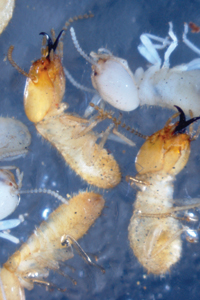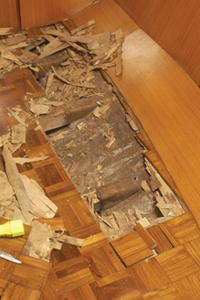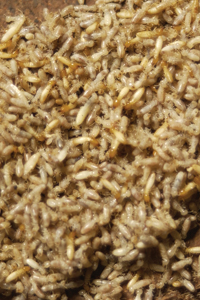The formosan subterranean termite is one of the most destructive termite species in the world. It can be found in China, Taiwan, Japan, South Africa, Sri Lanka and the USA (including Hawaii).



Note: images are not to size
The risk to Australia
The formosan subterranean termite forms large colonies, which can quickly cause major structural damage to timber and timber components in housing and furniture. The termite has the potential to devastate Australia’s forests and native bush as well as have a major impact on timber-based industries.
What the formosan subterranean termite looks like
The formosan termite lives in a colony that contains distinctive groups called ‘castes’. These castes look different from one another and each has a special duty to carry out in the colony. A termite worker is pale yellow in colour. It builds nests from a substance that resembles paper but is actually made from soil, timber and other plant material, which is mixed together with its saliva and faeces.
A termite soldier is approximately 12 to 15 millimetres long, is pale yellow and has large dark ‘teeth’. When disturbed, it exudes drops of milky fluid from its head.
An alate termite has wings, is yellowish-brown and is typically seen between early spring and midsummer swarming in large numbers at dusk.
What to look for
Nests are made in soil, wood, hollows or spaces between walls and floors. They can be found in shipping containers, timber products and timber yachts. The termites are attracted to lights and are often found around windows, light fixtures, windowsills and in spider webs.
SEE. SECURE. REPORT.
If you see this pest or any other pest that you think may have hitchhiked to Australia, contain it where possible and immediately report it to the Department of Agriculture Fisheries and Forestry on 1800 798 636.
For safety, consult a departmental entomologist before handling specimens.
